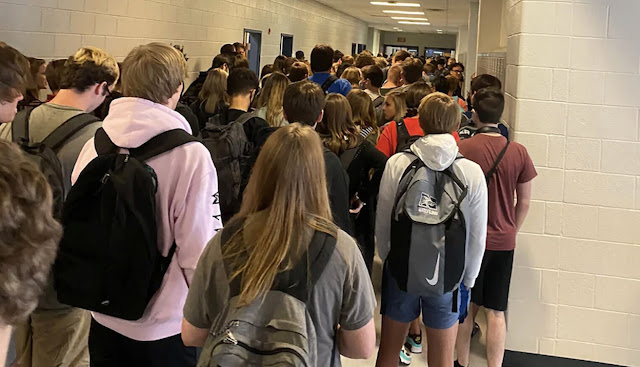We were ripe for protests. We should have seen them coming. Some of us undoubtedly did.
The COVID-19 pandemic stripped all the systemic problems and weaknesses in our racist, inequitable society bare. They stare us in the face every day of our transformed lives. Every news cycle, the horrors pile up.
Cascades of catastrophe
An ever-changing number of states show uncontrolled spread of COVID. We’ve recorded more than five million cases of COVID in the USA. And more than 160,000 deaths. By the time this post goes live, there will be more. Of course—inevitably—Black, brown, and non-gender-conforming groups and communities take the hardest hit. Always.
 |
| From the New York Times |
Approximately 16.4 million people currently face unemployment in the US. Our GDP dropped off the bottom of the chart in the second quarter. It’s officially a recession, but Washington Post columnist Robert J. Samuelson recently called for us to “call it what it is,” a Pandemic Depression. His arguments are compelling.
Meanwhile, millions of Americans are staring homelessness in the face, as short-term pandemic aid from the Federal Government runs out. Thanks to Senate inactivity, nothing is there to replace it.
If past is prelude, protests were inevitable
Oh, yes, we were ripe for protests. At crisis points like the one we’re in, people always take to the streets. A recent National Geographic article surveyed earlier protests in the USA, but you don’t have to stop at our borders. Just look at the unrest that swept several continents in 1848. Driven by civil unrest, famine, and accumulated outrage, these uprisings toppled governments and transformed many parts of the world—including the USA.
Courtesy of National Geographic
Crisis breeds desperate measures. Five hundred years ago, a climate crisis drove the Chimú people of Peru (the empire that preceded the Inca) to sacrifice hundreds of their own children.
We haven’t gone that far, but some of us do seem willing to send them, their teachers, and other school personnel back into classrooms with less-than-ideal safeguards. Was anyone surprised to see the North Paulding High School close after only a week?
 |
| Photo by Hannah Waters, via AP and The Washington Post |
Yes, it’s getting more violent. That was predictable, too.
When I started the First Amendment series, I had protests in mind. I thought it was important to remember that the First Amendment says, “Congress shall make no law . . . abridging . . . the right of the people peaceably to assemble, and to petition the Government for a redress of grievances.”
Dr. Martin Luther King called riots “the language of the unheard” in a 1966 interview with Mike Wallace on the TV show 60 Minutes. He explained how people can be pushed to violence, yet steadfastly argued for nonviolent protest. Unfortunately, many today have grown impatient.
Back at the start of the summer, the protests were mostly peaceful—except when exacerbated by forceful curfew enforcement, or a minority of agitators. Lately, however, we’ve seen a troubling uptick in violence.
Why the violence? Why now? It may be deepening desperation, sparked by the worsening death toll and unemployment picture. Perhaps it's growing disillusionment, after a summer of protests that have sparked conversation—but no real action in response to people’s deepening needs. And it might be a partial reaction to the clear disregard by police and some authorities for the arguments protesters make.
We’re still ripe for protests. And I fear we’ll continue to be a powder keg till inequalities are ameliorated, help is delivered, and the pandemic abates.
In other words, don’t hold your breath. It’s not nearly over.

No comments:
Post a Comment